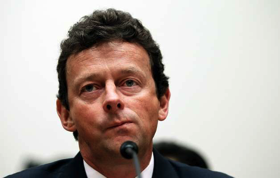Why is Root Cause Analysis Applied Reactively More Than Proactively?
I attended an interesting talk on the brain yesterday and had a different perspective on why so many managers are reactive rather than being proactive.
What do I mean by that? Managers wait to start improvement efforts until after something BAD happens rather than using a constant improvement effort to avoid accidents before they happen.
What about “human nature” (or the brain or neuropsychology) makes us that way? It has to do with the strongest human motivators.
Dr. Christophe Morin said that research shows that the most recognizable human emotions expressed in facial expressions are:
- Fear
- Sadness
- Disgust
- Anger
- Surprise
- Trust
- Joy
- Anticipation
What draws our attention the most? Fear and Anger.
It seems that fear and ager catch our eye because they could indicate danger. And avoiding danger is what our primitive brain (or reptilian brain) is wired to do. Before we have any conscious thought, we decide if we need to run or fight (the fight or flight reaction).
What does this have to do with root cause analysis and reactive and proactive improvement?
What happens after an accident? FEAR!
Fear of being fired if you did the wrong thing.
Fear of looking bad to your peers.
Fear of lower management getting a bad review from upper management if your people look bad.
And even fear of consequences (lower earnings and lower stock price and a reaction from the board) for upper management if the accident is bad enough and gets national press coverage.
Even senior managers may get fired after a particularly disastrous accident.


So fear drives behavior in many cases.
Management is much more likely to spend valuable resources when they are afraid (after an accident) than before the accident when the fear is much less and the promise of improvement through proactive improvement may bring joy or the anticipation of success.
Thus, management focuses on root cause analysis for accidents and incidents rather than applying it to assessments, audits, and peer reviews.
Can your management overcome human nature and apply root cause analysis before an accident happens or do they have to wait for a disaster to learn? That may be the difference between great leaders and managers waiting to be fired.
Don’t wait. Start applying advanced root cause analysis – TapRooT® – today to prevent future accidents.
Attend one of our public 5-Day TapRooT® Advanced Root Cause Team Leader Courses to learn how to apply TapRooT® reactively and proactively.



